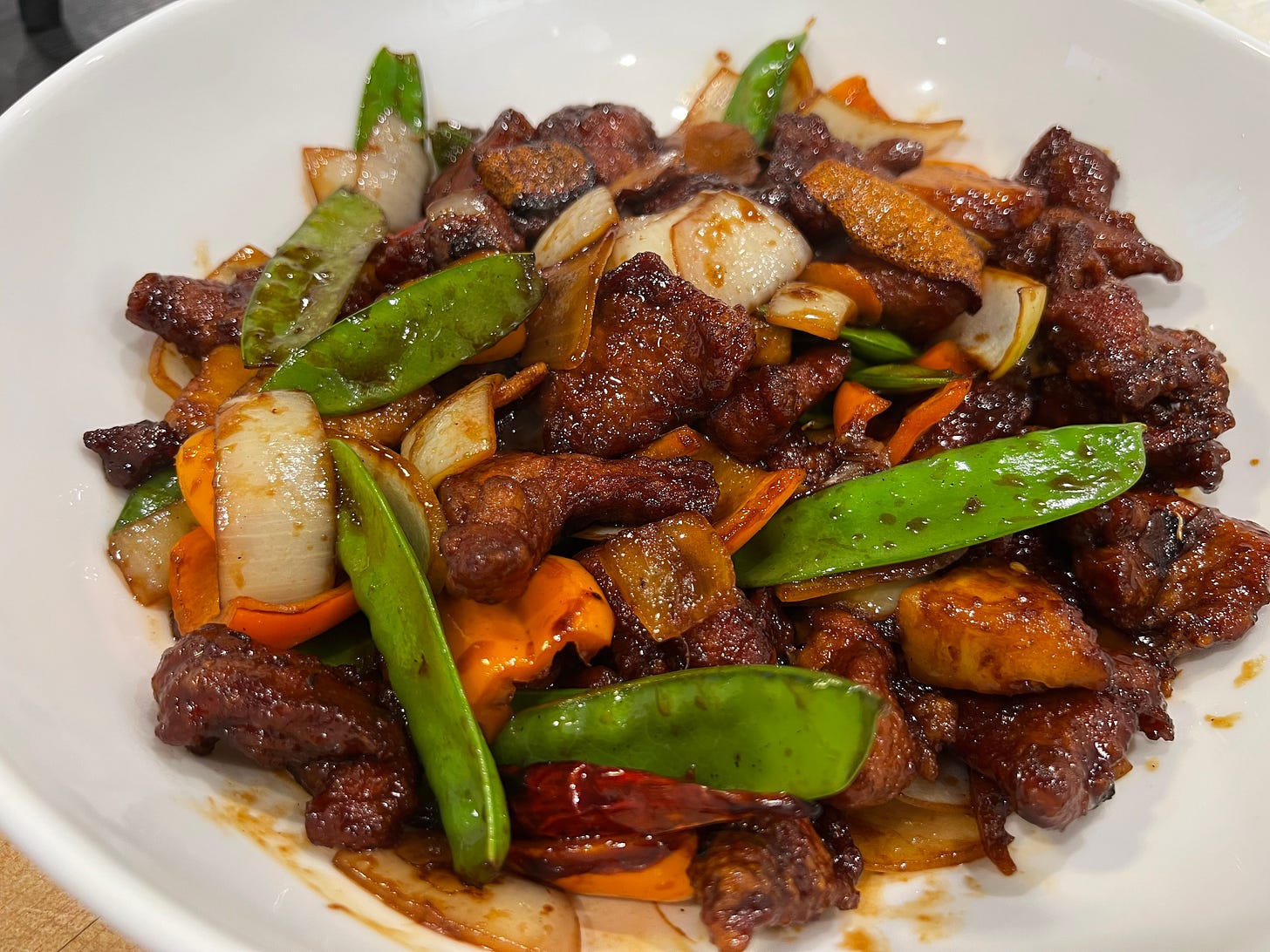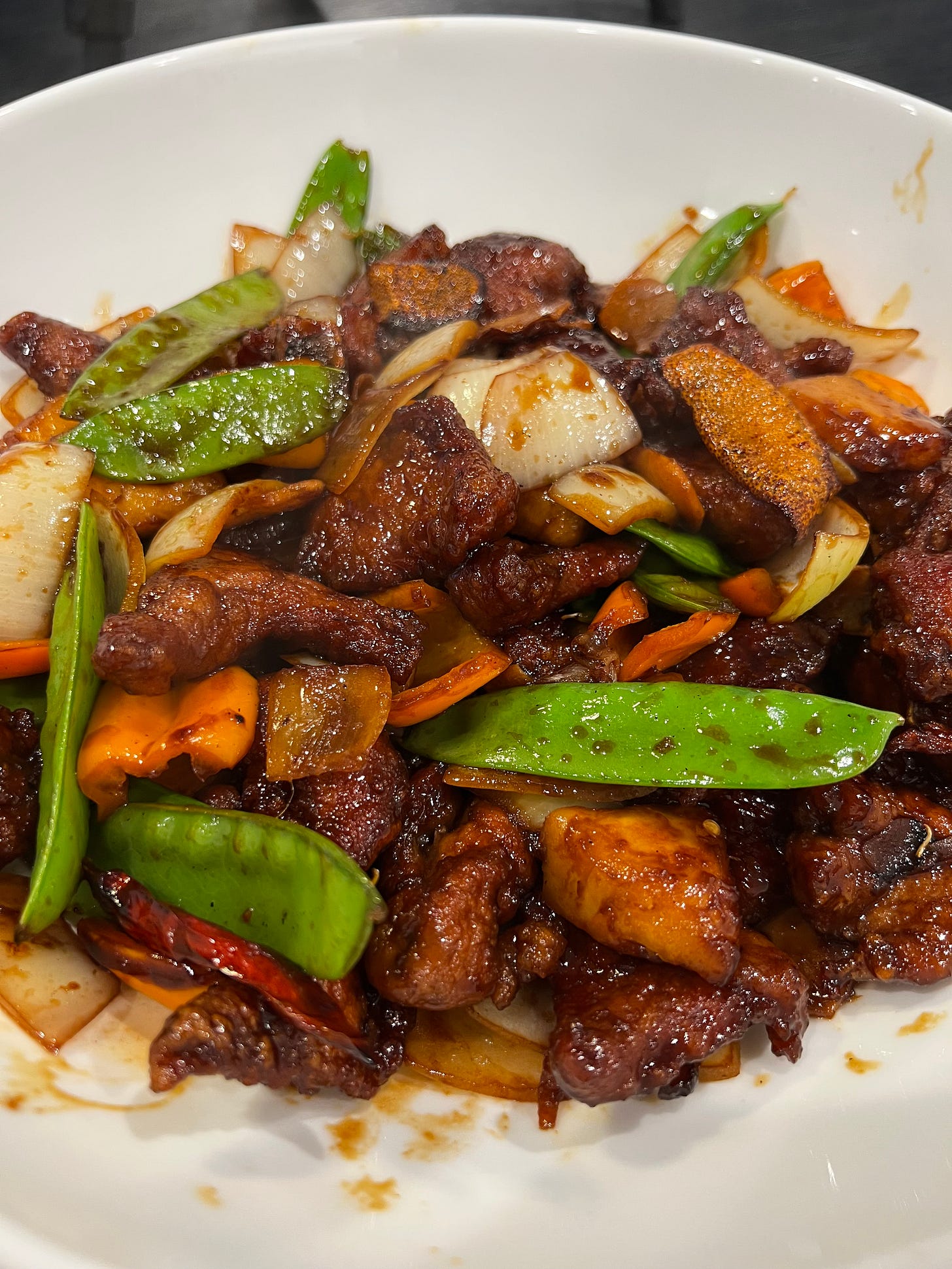Sweet & Sour Pork: Spilled Milk #296
Is this the sweetest weeknight dinner of all? I think so!
Are you watching my outdoor cooking show Wild Game Kitchen? New episodes air on Mondays at 7 PM ET/6 PM CT on Tastemade. Tune in next week to see me cook pheasant! Find recipes from the show here.
I’m sharing great promotions and savings on everything from spoons to spices. Check out the gifts and deals here!
Sweet and sour pork 糖醋里脊 is one of the most recognizable and beloved Chinese dishes worldwide. Its origins can be traced back to ancient China with historical roots in Cantonese cuisine. Over time, it has evolved and spread globally, becoming a staple in both the authentic Chinese cooking canon and in the Westernized Chinese cuisines around this side of the globe. One thing has always struck me as odd: When I eat this dish in China, it’s in a thinner sauce that ultimately reduces and glazes the pork and vegetables. In America, it’s typically a more commercialized sauce with food coloring, thickened with a cornstarch slurry. I like to cook it the more traditional Chinese way and with fresh sliced pineapple because I tried making this without it so many times over the years, but I love the flavor the fruit gives the dish.
The origins of sweet and sour pork can be linked to traditional Chinese cooking methods that emphasize a balance of flavors, particularly the contrast between sweetness and acidity. The dish was most likely created during the Qing Dynasty (1644–1912) in Guangdong province, where early forms of sweet and sour dishes were already present in Cantonese cuisine. The Chinese culinary principle of harmonizing flavors led to the creation of dishes that incorporated vinegar for tanginess and sugar for sweetness.
Sweet and sour sauces were used in various regional cuisines, but it was in Cantonese cooking of the southeastern part of the country that they became particularly refined. Cantonese chefs developed a deep-frying technique that made the pork crispy before coating it in a flavorful sauce. Over time, this dish became standardized, leading to the dish we know today in China.
During the late 19th and early 20th centuries, Chinese immigrants carried their culinary traditions to North America, Europe and Southeast Asia. As Chinese restaurants in those countries adapted their dishes to suit local tastes, sweet and sour pork underwent several modifications. In Western countries, the dish utilized red food coloring and additional ingredients like bell peppers, pineapple, and onions. The sauce itself also became thicker and sweeter in an effort to appeal to Western palates of the time. Some of that stayed and became the dish we know today in America.
Despite the variations, the essence of the dish remained the same: crispy pork bites enveloped in a tangy-sweet sauce. The dish became a symbol of Chinese-American and Chinese-British cuisine, widely available in Chinese takeout menus around the world. My version below has the peppers/onions/pineapple, and I had some snow peas in my fridge, which I used here in this version. So that’s definitely Chinese-American. But my sauce is more 19th century Chinese in style.
Sweet and sour pork remains an iconic dish in Cantonese cuisine and is often served at banquets, family gatherings and special occasions because of its fundamental call back to traditional Chinese cooking and philosophy about food.
In a broader cultural context, sweet and sour pork represents the adaptability of Chinese cuisine and its ability to transcend borders while maintaining its core identity. Whether enjoyed in a traditional Chinese way or in a Westernized version, it continues to be a beloved dish that bridges cultures and palates. Mine is a hybrid of it all. Enjoy.
Recipe: Sweet & Sour Pork
Keep reading with a 7-day free trial
Subscribe to Andrew Zimmern's Spilled Milk to keep reading this post and get 7 days of free access to the full post archives.






